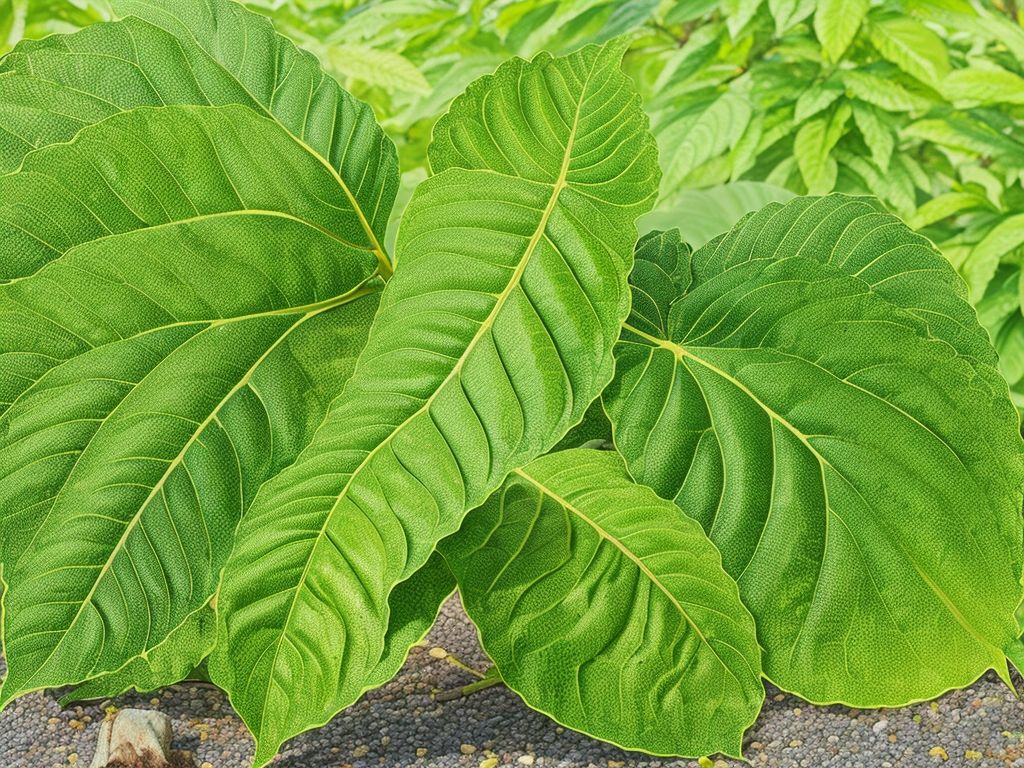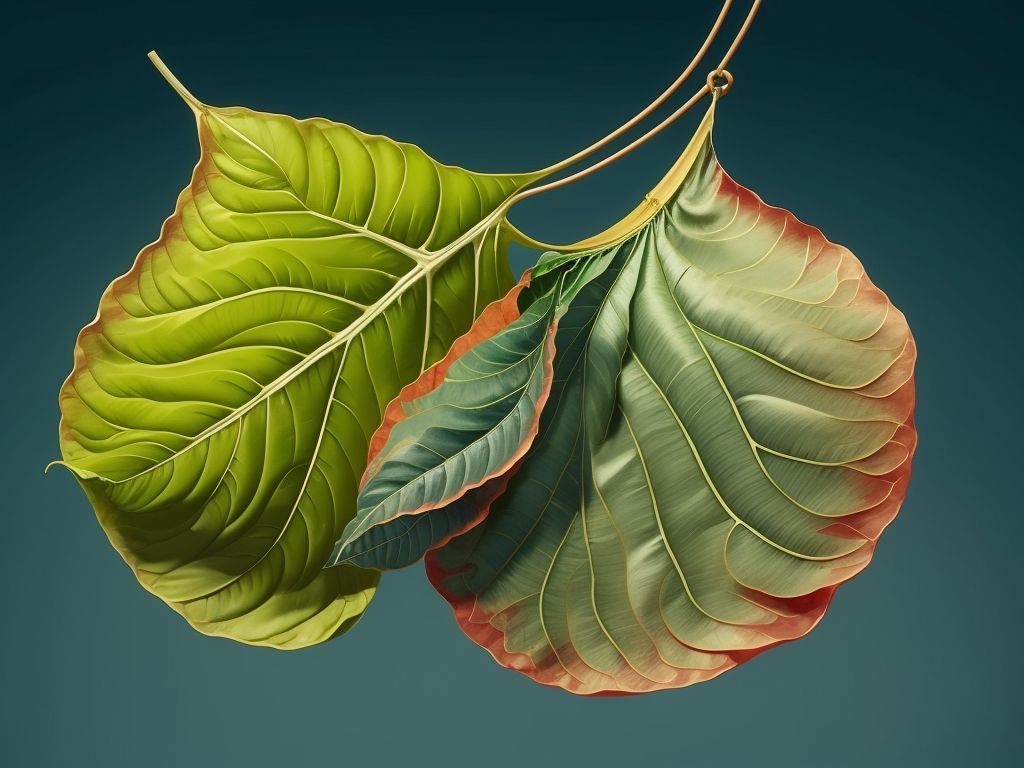The Ultimate Guide on How to Grow Kratom: Step-by-Step Tips and Techniques
Growing kratom can be an enjoyable task for those fascinated by this unique plant! It’s native to Southeast Asia and has become popular around the globe due to its purported medicinal effects. Here we’ll talk about how to grow kratom successfully.
- To start, you need viable seeds or cuttings from a reliable source. These should be from mature kratom trees so they have maximum growth. Plant them in well-draining soil with a pH between 5.5 and 6.5.
- Kratom plants love tropical climates with high humidity and temperatures between 75°F and 90°F. Both indoor and outdoor gardens need to mimic these conditions.
- Providing adequate sunlight exposure (or artificial lighting) for 5-6 hours daily is key.
- Also, regular watering without over-saturating the soil is essential for healthy growth.
What is kratom?
Kratom comes from the leaves of the Mitragyna speciosa tree and has been used for centuries in Southeast Asia.
It’s now gaining popularity worldwide due to its potential benefits and diverse uses.
The active compounds, mitragynine and 7-hydroxymitragynine, interact with opioid receptors in the brain, creating effects that depend on the dosage.
Low doses act as a stimulant, while higher doses can cause sedation and pain relief.
People consume kratom in many forms, such as powder, capsules or tea.
The effects start within 10-15 minutes and can last for hours.
It’s important to use kratom responsibly and in moderation to avoid side effects.
Before taking kratom, it’s essential to consult healthcare professionals. They can help with dosage and ensure it won’t interfere with other medications.
A study in the Journal of Medicinal Chemistry showed kratom alkaloids may be effective analgesics without respiratory depression risks.
This offers an alternative to traditional opioid prescriptions.
Benefits of growing kratom
Growing kratom offers many advantages. Here are some of the main ones:
- Increased accessibility. Growing your own kratom plants gives you easy access to a fresh supply.
- Cost savings. You don’t need to buy from vendors, so you can save money in the long run.
- Quality control. You’re in charge of cultivation methods and can avoid harmful substances.
- Sustainable source. Growing your own kratom helps preserve and conserve the species.
Plus, you can cultivate kratom indoors and outdoors. This gives you flexibility to suit your conditions. To optimize growth, monitor moisture and light levels. This will keep your plants healthy.
Getting started with growing kratom
Starting your kratom-growing journey? Consider these key points!
- Soil: Well-draining, pH 5.5-6.5.
- Climate: 75°F-90°F. Colder regions? Grow inside.
- Lighting: Sunlight and some shade.
- Watering: Moist soil, not waterlogged.
- Fertilization: Balanced organic fertilizer every two weeks.
- Patience: Takes several years to reach maturity.
Plus, more details:
- Airflow: Adequate spacing between plants.
- Pruning: Regularly to maintain shape and encourage growth.
This plant has an interesting history – native to Southeast Asia, it’s been used medicinally for centuries. Cultivation takes dedication and detail. With the right care, you can enjoy watching your plants flourish! Start your botanical adventure now!
Preparing the planting area
Choose the perfect spot for your kratom plants. They need partial sunlight and soil that is rich in organic matter and drains well. Weed out any rocks, weeds, or debris. Do a pH test to check the acidity. Kratom plants like slightly acidic soil of 5.5-6.5 pH. Use a garden fork or tiller to loosen the soil bed and add organic matter like compost or manure. Make sure there’s proper drainage. Mulching with materials like straw or wood chips helps retain moisture and adds nutrients.
Kratom has been grown for centuries in Southeast Asia, where it has great cultural significance. It’s becoming popular around the world for its potential therapeutic effects.
Planting and care
- Select a spot with well-drained soil and partial sunlight.
- Kratom plants love warm climates.
- To prepare the soil, mix compost or organic matter with it.
- Get high-quality seeds/cuttings from reliable sources.
- Plant your kratom in a hole slightly bigger than the roots.
- Water regularly, but don’t overwater.
- Nurture your plant with balanced organic fertilizer.
- Prune any damaged or excessive growth.
- Protect from extreme weather.
- Patience and attention are key.
- Harvest leaves at specific intervals for optimal potency.
- Mulch around the base; retain moisture and regulate soil temperature.
- Inspect for pests; use natural insecticides.
- Prune strategically for bushier growth.
- Keep temperatures between 70-90°F (21-32°C).
- With consistent care and attention, you can maximize its benefits and botanical beauty.
Harvesting and processing kratom leaves
Harvesting kratom leaves calls for knowledge and expertise! They need to be harvested during the right season, then hand-picked by experienced harvesters to select only the mature leaves. After that, the leaves must be dried and ground to a powder form. It’s important to take your time with each step, as any misstep can affect the quality of the final product.
Ready to get started on your own kratom harvesting & processing journey? Enjoy the many benefits of properly prepared kratom – start cultivating today!
Storing and using kratom leaves or powder
Store kratom leaves and powder correctly for the best results. Temperature should be room temperature, not too hot or cold. Keep leaves slightly moist but not wet. Powder should be stored in an airtight container to keep moisture out. Leaves should last up to two weeks when stored properly and powder typically six months to one year. Follow dosage guidelines from a reliable source for your needs. Keep kratom away from children and pets. Enjoy the benefits by following these guidelines! Start storing and using it today!
Potential challenges and troubleshooting
Growing kratom can be tricky. But don’t worry! Here are a few tips to help you out:
- Monitor soil moisture. Kratom plants love moist soil, but don’t overdo it. Make sure the soil is damp. If you see yellow leaves or root rot, adjust your watering routine.
- Provide enough light. Kratom needs bright, indirect light. Too little light can cause stunted growth or leggy stems. Place your plant near a window with filtered sunlight or get artificial grow lights.
- Monitor temperature and humidity. Warm and humid environments suit kratom plants best. Keep temperatures between 70-90°F (21-32°C) and humidity around 50-70%. Use a humidifier if needed. Avoid exposing your plant to drafts or extreme temperatures.
Keep an eye out for signs of distress like discoloration, wilting leaves, or pests. Talk to experienced kratom growers or join online communities for tailored advice.
Ready to start growing kratom? Don’t miss out on this rewarding experience! With patience and dedication, you’ll have a thriving kratom garden in no time.
Conclusion
This article has taken a deep dive into growing kratom. We’ve looked at the right seeds to pick, soil conditions, temperature and light.
It’s key to have patience when growing kratom. Unlike some plants, it takes longer to mature and be its best. You must water it, fertilise it and keep pests away for it to grow well.
The quality of the leaves depends on how well you look after the plants. Pruning and harvesting often is important for new growth and potency. You also need to store harvested leaves carefully for freshness and effectiveness.
Growing kratom isn’t for everyone. You need dedication, knowledge and resources to make the right environment. Ensure you’re ready for the challenge before you begin.
Don’t miss this chance! To nurture a plant from seed to leaf is something special. Embrace the adventure with enthusiasm and become part of a growing community that appreciates kratom. Start today and watch your very own kratom garden blossom.
Frequently Asked Questions
FAQs for How to Grow Kratom:
Q1: Can kratom be grown indoors?
A: Yes, kratom can be grown indoors as long as you provide the right conditions such as sufficient lighting and proper humidity levels.
Q2: What type of soil is best for growing kratom?
A: Kratom thrives in well-draining soil with a pH level between 5.5 and 6.5. A mix of peat moss, perlite, and vermiculite is commonly used for growing kratom.
Q3: How often should I water my kratom plant?
A: Kratom plants require consistent moisture, but they should not be overwatered. It is suggested to water the plant once the top inch of soil becomes dry.
Q4: What are the optimal temperature and humidity levels for kratom growth?
A: Kratom plants prefer temperatures between 75-90°F (24-32°C) and humidity levels around 70-90%. Regular misting can help maintain the desired humidity.
Q5: How long does it take for a kratom plant to mature?
A: Kratom plants typically take several years to reach maturity. Under ideal conditions, it can take around 3-5 years for the plant to produce mature leaves suitable for harvesting.
Q6: Can I propagate kratom through cuttings?
A: Yes, kratom can be propagated through stem cuttings. Select a healthy branch with multiple nodes, remove the lower leaves, and place it in water or moist soil. Rooting usually occurs within a few weeks.




Leave a Reply
Want to join the discussion?Feel free to contribute!